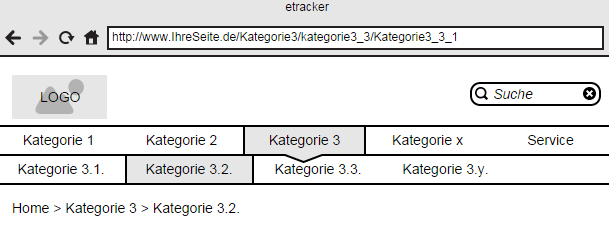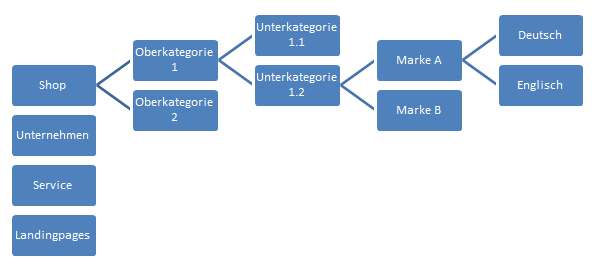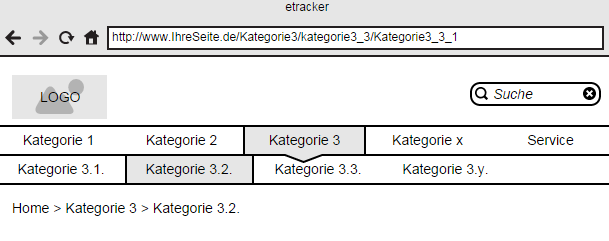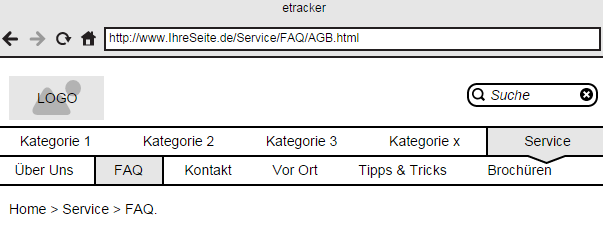The following code configuration makes sure the use of the website content can be evaluated as optimally as possible.
Note:
All values are to be transferred in the URL-coded format (RFC 3986), especially when they contain special characters.
Pagename (et_pagename)
When compiling data on the page descriptions, it is essential that each page has been assigned a distinct pagename as this pagename is understood as a page’s ID. If the parameter is not filled, the pagename in the reports will be automatically generated from the respective URLs, that is, from the URL of the respective page without domain or URL parameter. Should the individual pages be controlled using parameters, clear page designations must be provided because the individual pages in the analysis cannot be viewed in a differentiated way. In addition, it can be sensible to add the CMS ID of the page to the pagename or to add additional information which is relevant to reporting, like for example, the template designation.
Note: In parameter et_pagename max. 255 characters can be transferred.
Examples for naming the pages:
Note: The positions in bold are just placeholders which need to be filled dynamically with content.
http://www.YourSite.de
var et_pagename = "IndexSite *CMS-ID* ~Home~";
http://www.YourSite.de/category3/category3_3
var et_pagename = "category_3 *CMS-ID* ~category-Site~";

Areas (et_areas)
The parameter et_areas defines areas or page groups which should be assigned to the individual pages of the website. If a page should be assigned to multiple areas or area levels, then they must be separated using a forward slash “/”. If the name of an area includes a slash (“/”) which is not to be used for setting up hierarchical areas, then you will need to enter the slash twice, like, Area AC//DC, for example. Defining the different areas in etracker is done using the hierarchical setup of the website and orients itself around the sitemap and, if necessary, around defined special areas. Fundamentally, each page of the website can be assigned to an area. The areas in etracker are set up in the same way as the breadcrumb navigation on the website. If there are different language versions of a website, the corresponding language can be transferred as an additional area level. Here, if possible, the navigation areas should be named uniformly and in the same language. All pages which stand alone and thus do not belong to any navigation area should be assigned to a special area, e.g. additional or landing pages.
Note: By default, categories can be analysed up to the fifth level.
In the following, the levels will be sketched graphically to provide examples:

Examples of page allocation in areas:
- Homepage
http://www.YourSite.de
var et_areas = "YourSite";
- Subpage category 3.3.1
http://www.YourSite.de/category3/category3_3
var et_areas = "YourSite/category3";

- Subpage AGB.html
http://www.YourSite.de/Service/FAQ/AGB.html
